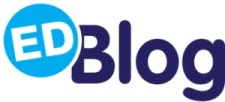Budgeting of schools has always been an issue in the country. Recently, more and more schools are facing individual school budget exclusions. Schools have had to juggle their resource allocation impacting the quality of education delivered to students. With the quality being compromised, the students, as well as the teachers, suffer in the long run. These budget exclusions impact the future of the children. Hence, schools and concerned authorities need to decide on an alternative solution to make up for the compromised levels of education.
All of these school budgets result from cost savings and efficiencies. There are constant budget pressures, and over seventy per cent of the school expenses go to staffing and instruction. However, some creative solutions need to be devised so that these school budget reductions don’t negatively affect the student’s education and the school’s atmosphere.
What are some of the alternative solutions for the problem of budget exclusions?
There is a need for budgetary solutions that are innovative and successful and have a favourable long-term influence, sustainability, and additional benefits. Some of these budgetary solutions are detailed below.
- Streamlining resources and managing infrastructure- Out of the whole of the resource allocation, the school authorities can manage the help wisely. It can be done through the reduction of school resources to manage infrastructure. Through this, the overall budgeting can be devoted to working on quality education and training. One example is using LED light bulbs, reducing thermostats outside school hours, turning off underused sections, and turning off lights and equipment more frequently.
- Researching cost-sharing strategies- Educational institutions can investigate newer models for sharing workloads, equipment, and resources, reducing overhead costs. Finding services duplicated at other government levels might lead to cost-sharing and scale-up opportunities. For example, equipment that is not frequently utilised can be shared with other institutions to reduce the cost used in facilities. Several facilities allow the schools to share these resources with interested parties such as online forums.
However, the primary solution to these budget reductions is the advent of online learning. Online education, or digital open learning methods and resources, can reduce the cost of textbook purchases and instructional resources. This can reduce the direct cost that goes into the purchase of assets.
How is online learning an effective solution to budget cuts across schools?
With the increase in budget cuts across the schools, there is a severe need to address the lowering standards of the quality of education in schools. Many alternative solutions can help the concerned authorities better manage budget cuts by regulating the quality of education. However, the most significant of the solutions is the decision to opt for online learning.
Online learning is a solution to these problems primarily because it saves money without cutting down on the quality of education. Online learning results in physical classrooms even being redundant. Furthermore, online education can facilitate a higher quality of education, which is career-focused. However, the same can not be provided with the increasing budget cuts in physical spaces. There are several other ways where hybrid classes with less requirement of physical space can also prove to be beneficial as a solution to the increasing budget cuts.
An online alternative provision can be advantageous to students who cannot access mainstream education. Allowing them to learn online can help them continue their education in a setting they are comfortable with. Additionally, this also assists with a school’s budget, especially if there are students at risk of exclusion. An exclusion costs schools thousands of pounds, whereas an effective online alternative provision can be an extremely cost-effective solution.
If you are searching for a solution to help with your school budget and would like to learn about an effective online alternative provision and how one could help, then visit EDClass. Students get one-to-one support from qualified teachers and the system matches a school’s curriculum with attendance and attainment racking integrated, all whilst students are fully safeguarded. Secondary schools subscriptions work out to just £40 per day and primary schools £16 per day.
To book a free online demonstration of the EDClass system, call the team on 01909 568338, send an email to mail@edclass.com or book directly here.









